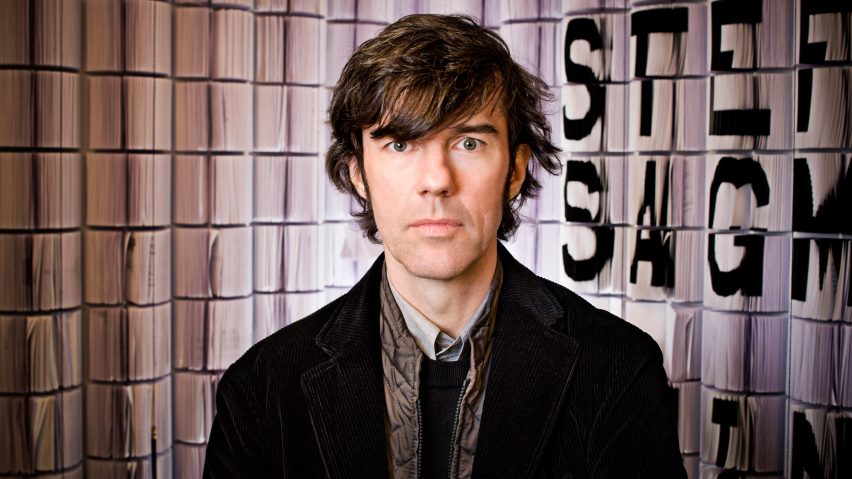
Stefan Sagmeister offers up his Instagram account as a design clinic
One of the world's best-known graphic designers Stefan Sagmeister is using his Instagram account as a tool for critiquing other designers' work.
Functioning like an online design clinic, New York-based Sagmeister is encouraging designers to send him their work to be featured on his Instagram account.
The work is posted to the account with a short review written by Sagmeister in the caption. His some 230,000 followers then also weigh in with their opinions in the comments section.
Sagmeister, who founded his New York design studio in 1993, came up with the idea before he embarked upon a year-long sabbatical six months ago.
"We had started a monthly salon in NYC where designers could come into our studio and I would critique their work," Sagmeister told Dezeen. "As this was not possible while I'm on sabbatical (I'm taking a year with equal time in Mexico City, Tokyo and the Austrian Alps), I thought to do it on Instagram."
"Designers send in work they want to have reviewed," continued Sagmeister, who has created brand identities and advertising campaigns for many household-name corporations.
"I select from the many that come in, either because they are very good and can be an example for others, or because I think they could be improved with some simple reconsiderations."
Submitted work comes from designers across the globe and is posted several times a week. Featured projects have included Josh Penn's Dyslexia animation, which sees typography moving, spinning and flickering around the screen to form jumbled words – giving an impression of what it's like to suffer from the reading disorder.
"I have found that the Instagram community was very helpful," Sagmeister said. "Most commenters genuinely want to improve the work, it has been very constructive. There's been very little snark."
When asked why he thinks this kind of service is useful, Sagmeister replied, "because it has the possibility to help someone".
"This can be meaningful," he said. "I will continue as long as I'm on sabbatical and then likely will do the salon again, with young designers coming to the studio."
In an Opinion piece for Dezeen, architecture and design critic Alexandra Lange argued that architects should encourage dialogue on social media accounts such as Instagram, Twitter and Tumblr. "Social media can make criticism, interpretation, dialogue and history part of daily life," she said.
"You can hashtag your firm. You can collate your campus work. You can geolocate your project. You can tip your hat to a colleague. You can tell us what you're reading. In doing so architects contribute to a broader dialogue about what makes a good experience. Don't leave it to the critics."
Instagram made it into last year's Dezeen Hotlist thanks to its ability to show the world sneak-peeks of high-profile buildings under construction.
The photo-sharing app has influenced the way Dezeen covers major architectural projects, as it allows us to publish roundups of new buildings before the official photos have been released. Recent stories include images of Jean Nouvel's National Museum of Qatar and Zaha Hadid's 520 West 28th condo building in New York.
Born in Austria in 1962, Sagmeister studied graphic design at the University of Applied Arts in Vienna. In his early career he worked on a number of commercial projects in New York and at advertising executive Leo Burnett's Hong Kong Design Group.
After settling in New York, he worked for his "hero" – Hungarian designer Tibor Kalman – before setting up his own studio shortly afterwards in 1993. Since then he has completed graphics projects for companies including HBO, the Guggenheim Museum and Time Warner, as well as album covers for artists including Aerosmith, The Rolling Stones, Lou Reed and Talking Heads.
But Sagmeister is perhaps best known for the poster advertising his 1999 AIGA lecture, for which he posed naked covered in text that was cut into his skin.
The studio was renamed Sagmeister & Walsh in 2012 after American designer Jessica Walsh was made partner. The studio has since overseen projects including a new brand identity for New York's Jewish Museum and an animated visual identity for cloud software management brand Fugue that moves to music.